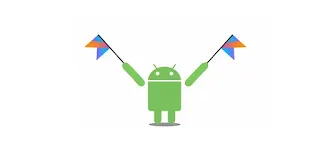67. Introduction to Jetpack Compose - Basic animations
🚀 Introduction to Jetpack Compose: Mastering Basic Animations
Welcome, Kotlin and Android developers! In this comprehensive guide, we'll dive deep into the world of animations in Jetpack Compose. Animations are a crucial part of creating engaging and interactive user interfaces, and Compose provides powerful and intuitive ways to implement them.
📍 Understanding Animation Basics in Jetpack Compose
Jetpack Compose offers several animation APIs that make creating smooth and dynamic UI interactions straightforward. Let's explore the core animation concepts and techniques.
🌟 Types of Animations in Compose
Compose provides multiple animation types to suit different use cases:
- Single Value Animations
- State-based Animations
- Transition Animations
- Infinite Animations
🔧 Basic Animation Example
@Composable
fun SimpleAnimation() {
var expanded by remember { mutableStateOf(false) }
val size by animateDpAsState(
targetValue = if (expanded) 200.dp else 100.dp,
animationSpec = spring(dampingRatio = Spring.DampingRatioMediumBouncy)
)
Box(
modifier = Modifier
.size(size)
.background(Color.Blue)
.clickable { expanded = !expanded }
)
}
🎨 Animation Types Breakdown
1. Single Value Animations
val alpha by animateFloatAsState(
targetValue = if (isVisible) 1f else 0f,
animationSpec = tween(durationMillis = 300)
)
2. State-based Animations
@Composable
fun StateBasedAnimation() {
var isSelected by remember { mutableStateOf(false) }
val scale by animateFloatAsState(
targetValue = if (isSelected) 1.2f else 1f,
animationSpec = spring()
)
Box(
modifier = Modifier
.scale(scale)
.clickable { isSelected = !isSelected }
)
}
🏋️ Practical Exercises
🚨 Common Animation Pitfalls
- Overusing animations can lead to performance issues
- Always test animations on different device configurations
- Use hardware acceleration for complex animations
spring() animation spec for natural, physics-based animations that feel more organic.
🔬 Advanced Animation Techniques
For more complex animations, consider using Transition and AnimatedContent composables, which provide more sophisticated animation capabilities.
📋 Performance Considerations
- Minimize the number of animated properties
- Use hardware acceleration
- Profile your animations
🎉 Conclusion
Jetpack Compose makes animations intuitive and powerful. By understanding these basic techniques, you can create engaging and interactive user interfaces that delight your users.
📱 Stay Updated with Android Tips!
Join our Telegram channel for exclusive content, useful tips, and the latest Android updates!
👉 Join Our Telegram ChannelGet daily updates and be part of our growing Android community!


Comments
Post a Comment